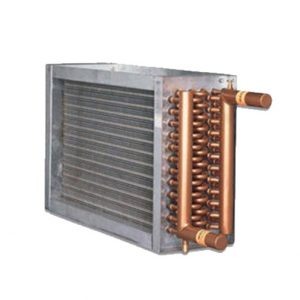
The cooling coil or evaporator coil is where building indoor air cooling actually takes place.
The liquid air conditioning refrigerant entering the cooling coil through the metering device (a capillary tube or THERMOSTATIC EXPANSION VALVE) is increasingly changed to gas form as it “boils” or evaporates as the liquid refrigerant flows through the cooling or “evaporator” coil, so that at the end of the cooling coil the refrigerant is totally in gaseous form.
This state change (liquid to gas refrigerant) absorbs energy, cooling the tubing and fins of the cooling coil and thus indirectly, cooling and dehumidifying indoor air that is blown across the coil.